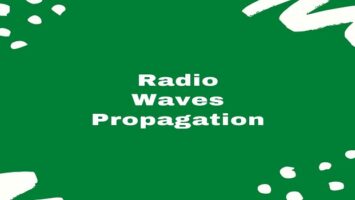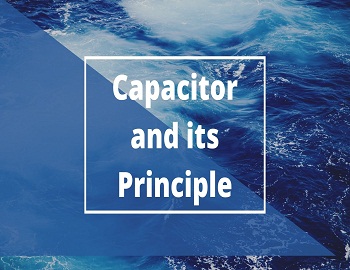Echo and its Applications:
When a person standing some distance away from a high wall produces a sharp sound, he hears two distinct sounds- one original and the other reflected from the wall.
The repetition of sound due to the reflection of the original sound by a distant obstacle is called an echo.
The sensation of sound persists in our ears for about 1/10th of a second after the exciting cause ceases to exist. An echo will be heard clearly, only if the direct and the reflected sounds arrive at the ear separated by an interval that is longer than 1/10th of a second, otherwise, the ear will not be able to separate the original sound from the reflected sound (echo). For a distinct articulate echo, the minimum distance d between the obstacle and the speaker-cum-listenr should be such that the time taken by the sound to cover the whole of distance 2d (forward plus backward) should be at least equal to t, here t is the persistence time for the observer, i.e.,
| 2d/c = t |
Since for most persons t = 1/10s, and C = 340 ms-1 under ordinary conditions, therefore, d = 17m. So the conditions for the formation of an articulate echo are:
- The size of the obstacle should be large enough (compared to the wavelength) to cause appreciable reflection of sound.
- The minimum distance of the obstacle from the source of sound should be 17m.
Besides the articulate echo, there are other kinds of echos, some of which are described below-
Multiple Echoes- When the sound is reflected many times between two parallel cliffs, a succession of echoes, called multiple echoes are produced as shown below. The rolling of thunder is partly due to multiple echoes produced by successive reflections between th clouds and the mountains.

Reverberation- If in the multiple echoes produced in a hall, the successive echoes follow one another so closely that the listener is not able to distinguish between them as separate sounds, then, he gets an impression as if the original sound has been prolonged in the hall due to reflections- such an effect is called reverberation.
Excessive reverberation in a hall is undesirable as it causes confusion in hearing the speech. It is also not good to have no reverberation because music without any reverberation is dull. The degree of reverberation in a hall must, therefore, be adjusted as per requirement by spreading carpets and curtains.
Musical Echo- A musical echo is produced due to reflection from a series of objects that are spaced at uniformly increasing distances from the source.
Whispering Gallery- In some of the famous galleries of the world, whisper in any part is transmitted throughout the gallery. One of such galleries is the circular gallery in the dome of St. Paul’s Cathedral in London.
The phenomenon of whispering gallery is mostly due to the continuous reflection of sound. The sound waves tend to cling to the circumference of the circular wall, so the whisper is perfectly audible at all places near the wall of the gallery as shown below.

Applications of Echo:
For echo applications, high-frequency ultrasonic signals are used. This is because a high-frequency ultrasonic beam travels in straight lines, just like a parallel beam of light. An ultrasonic beam is usually generated by vibrating a quartz plate by electrical methods. Some animals and birds are able to produce ultrasonic signals in a natural way by crying.
(1) Echo Depth Finder- In an echo depth finder, ultrasonic pulses are produced by vibrating a quartz plate. The ultrasonic signals are directed towards the bed of the sea. On meeting the seabed, the signals are reflected and on arriving back, they are received by the same quartz plate as shown below.

If t is the time taken by the ultrasonic signal for its to-and-fro journey, then the depth d of the sea bed is given by-
| 2d = Ct |
where C is the velocity of sound in water.
(2) Trawlers- A trawler is a small ship used for fishing. The trawler man is able to locate the shoals of fish and their distances by a method similar to the one described above. The quartz plate vibrator transmits ultrasonic sound pulses in various directions. When the pulses fall on a shoal of fish, they are reflected. The location of the shoal can be easily determined by noting the direction and the signal delay time.
(3) Sonar- Sonar means Sound Navigation and Ranging. It has a quartz vibrator and a pulse oscillator, etc., to generate ultrasonic pulses. These pulses travel in a particular direction. On meeting an obstacle, they are reflected back and received by the same quartz vibrator. This method is very useful in locating submarines and hidden icebergs.
(4) Bats- Bats use an echo-sounding system to find their path. While flying, they emit ultrasonic pulses. If no reflected signal is received by the bat, it means that there is no obstacle in its path. However, if a reflected signal is received, the bat carefully listens to the signal and makes a judgment of the position of the obstacle.
(5) Dolphins- A dolphin is a mammal having a fish-like body and numerous teeth. It can also emit high-frequency ultrasonic pulses. By listening to the reflected signals, a dolphin is able to avoid the fishing nets. It is also able to detect fishes at night or even in morgue water through which it is not possible to see.









Comments (No)